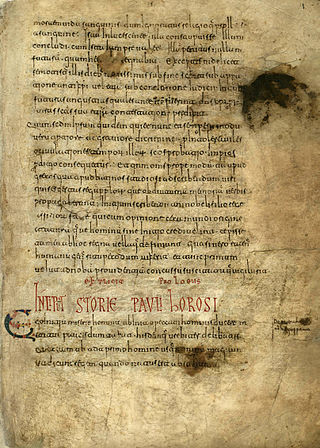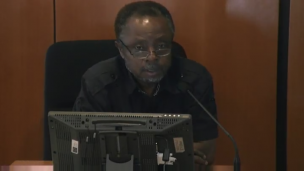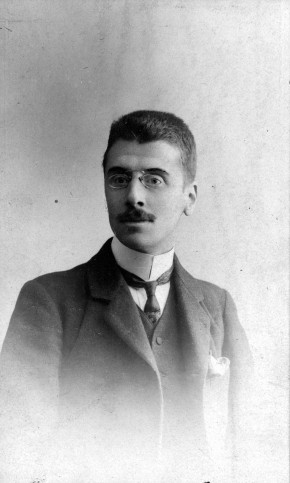Related Research Articles

Martín Fernández de Navarrete y Ximénez de Tejada, was a Spanish noble, grandson of the Marquess of Ximenez de Tejada, knight of the Order of Malta, politician and historian. He was a Spanish senator and Director of the Spanish Royal Academy of History (1824-1844).

Visigothic script was a type of medieval script that originated in the Visigothic Kingdom in Hispania. Its more limiting alternative designations littera toletana and littera mozarabica associate it with scriptoria specifically in Toledo and with Mozarabic culture more generally, respectively.
Gonzalo Parra-Aranguren was a judge at the International Court of Justice in The Hague, Netherlands. He was born in Caracas, Venezuela, and was married to María Trinidad Pulido Santana. He served as a Professor at The Hague Academy of International Law in 1988. He is the author of numerous legal textbooks.

Martin Codax or Codaz, Martín Codax or Martim Codax was a Galician medieval joglar, possibly from Vigo, Galicia in present-day Spain. He may have been active during the middle of the thirteenth century, judging from scriptological analysis. He is one of only two out of a total of 88 authors of cantigas d'amigo who used only the archaic strophic form aaB. He employed an archaic rhyme scheme whereby i~o / a~o were used in alternating strophes. In addition Martin Codax consistently utilised a strict parallelistic technique known as leixa-pren. There is no documentary biographical information concerning the poet, dating the work at present remains based on theoretical analysis of the text.
Antonio Alatorre Vergara was a Mexican writer, philologist and translator, famous due to his influential academic essays about Spanish literature, and because of his book Los 1001 años de la lengua española.

Gaucho literature, also known as gauchesco ("gauchoesque") genre was a literary movement purporting to use the language of the gauchos, comparable to the American cowboy, and reflecting their mentality. Although earlier works have been identified as gauchoesque, the movement particularly thrived from the 1870s to 1920s in Argentina, Uruguay and southern Brazil after which the movement petered out, although some works continued to be written. Gauchoesque works continue to be read and studied as a significant part of Argentine literary history.
The Glosas Emilianenses are glosses written in the 10th or 11th century to a 9th-century Latin codex called the Aemilianensis 60; the name Glosas Emilianenses is also sometimes applies to the entire codex. These marginalia are important as early attestations of both an Iberian Romance variety and of medieval Basque. The codex is now in Madrid, but came from the monastic library at San Millán de la Cogolla. The anonymous author of the glosses is presumed to be a monk at San Millán de Suso, one of two monastic sites in the village.

The Códice de Roda or Códice de Meyá is a medieval manuscript that represents a unique primary source for details of the 9th- and early 10th-century Kingdom of Navarre and neighbouring principalities. It is currently held in Madrid as Royal Academy of History MS 78.
Julián Ribera y Tarragó was a Spanish Arabist and academic.
Miguel Ángel Garrido Gallardo is a Spanish philologist and semiotician. He is the adopted son of the town of Los Santos de Maimona. He is a professor of research at the Consejo Superior de Investigaciones Cientificas (CSIC) [National Council for Scientific Research] in Madrid and distinguished university professor.
Consuelo Hernández is a Colombian American poet, scholar, literary critic and associate professor of Latin American studies at American University since 1995.

Germán Gullón, literary critic and writer, is a professor of Spanish literature and member of the Amsterdam School for Cultural Analysis at the University of Amsterdam. He has authored, beside his scholarly works and essays, two books of short stories, Adiós, Helena de Troya and Azulete, and two novels, Querida hija and La codicia de Guillermo de Orange.

Sampiro (c. 956 – 1041) was a Leonese cleric, politician, and intellectual, one of the earliest chroniclers of post-conquest Spain known by name. He was also the Bishop of Astorga from 1034 or 1035 until his death.

Justo Bolekia Boleká is an Equatorial Guinean scholar and writer of Bubi descent.

Julián Juderías y Loyot was a Spanish historian, sociologist, literary critic, journalist, translator and interpreter.
The Poem of Almería is a medieval Latin epic poem in 3851⁄2 leonine hexameters. It was appended to the end of the Chronica Adefonsi imperatoris, an account of the reign of Alfonso VII of León and Castile, and narrates the victorious military campaign of 1147 that culminated in the conquest of the port of Almería. The poem, as it survives, is unfinished, abruptly ending mid-line before recounting the actual siege of Almería itself. Of its surviving lines, 293 consist of "dénombrement épique, a stirring roll-call of the chief members and contingents of the army".

Diego Martínez Torrón is a professor of Spanish Literature at the University of Córdoba, Spain, and a writer, author of essays, poetry and novels. He has been a speaker at many of the major universities in Europe and the United States. A specialist in nineteenth and twentieth century Spanish literature he has published numerous books on Spanish Romanticism, with interpretive contributions and unpublished texts. He has edited the most faithful edition of the complete works of authors such as José de Espronceda and the Duque de Rivas. He has also written about Lista and Quintana and the work of Spanish progressive liberals from the early nineteenth century to the end of the period of Romanticism. He has studied the poetic thought of Juan Ramón, Octavio Paz and José Bergamin. He has also dedicated numerous studies to the works of Cervantes. He has studied the narrative of Álvaro Cunqueiro, Juan Benet, Azorín and has published the first annotated edition of El Ruedo Ibérico of Valle-Inclán. His concept of literary methodology stems from a new, non-Marxist approach to the binomial ideology and literature. He has edited Don Quixote, studying the thinking of Cervantes.
Blanca López de Mariscal or Blanca Guadalupe López Morales is a Professor emeritus and researcher in literature at Tecnológico de Monterrey, Campus Monterrey, México.

Francisco Darío Villanueva Prieto is a Spanish literary theorist and critic. He has been a member of the Royal Spanish Academy since 2007, and he occupies the chair corresponding to the letter D. Secretary of the Academy from December 2009, he was elected director in 2014, post he held until January 2019.

María Elvira Roca Barea is a Spanish academic and writer. She studied philology, and specialized in the literature of the Middle Ages and early modern Europe. Her research work has primarily focused on narrative strategies in different literary periods, but she became famous for her work on the Spanish Black Legend.
References
- ↑ Martín, José Carlos (2011), “Los Annales martyrum transmitidos por Madrid, BN, 10029 y Madrid, BRAH, 78: edición, estudio y panorámica de su influencia en la literatura analística latina de la Hispania medieval”, Anuario de Estudios Medievales 41: 311-341; Bautista, Francisco (2016), “Sobre el origen e influencia de los Annales martyrum”, Hispania Sacra 68: 477-490.
- ↑ Madrid: Biblioteca Nacional de España, 10029, fol. 144v. The text was initially published in Flórez, Enrique (1751). España Sagrada, vol. 6, Madrid: Oficina de Antonio Marín, 347-350, and later in Martín, José Carlos (2011), “Los Annales martyrum transmitidos por Madrid, BN, 10029 y Madrid, BRAH, 78: edición, estudio y panorámica de su influencia en la literatura analística latina de la Hispania medieval”, Anuario de Estudios Medievales 41: 313-314.
- ↑ Madrid: Biblioteca de la Real Academia de la Historia, 78, fol. 193. Published in Martín, José Carlos (2011), “Los Annales martyrum transmitidos por Madrid, BN, 10029 y Madrid, BRAH, 78: edición, estudio y panorámica de su influencia en la literatura analística latina de la Hispania medieval”, Anuario de Estudios Medievales 41: 318-320.
- ↑ Furtado, Rodrigo (2020). "Emulating Neighbours in Medieval Iberia Around 1000: A Codex from La Rioja (Madrid, RAH, cód. 78)". Conflict and Collaboration in Medieval Iberia. Cambridge Scholars Publishing. pp. 57–58. ISBN 978-1-5275-5454-2.